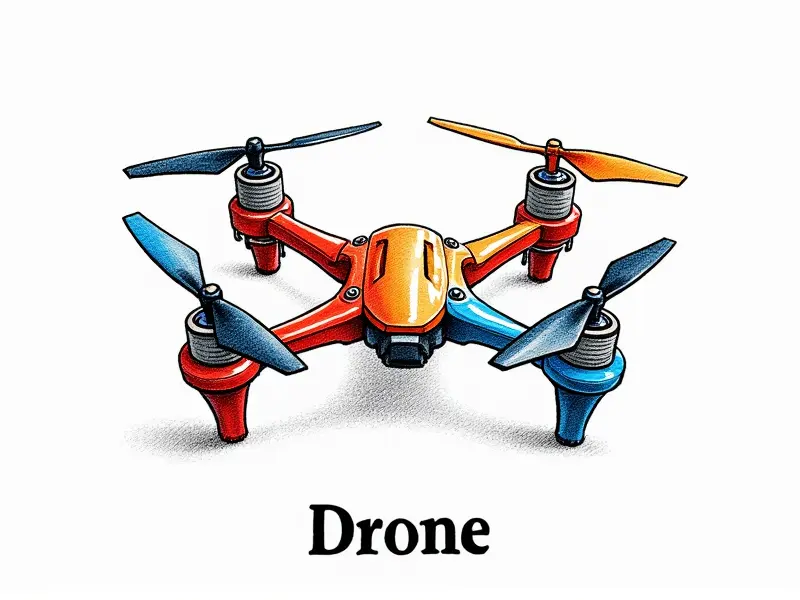How do RC quadcopter props work?

RC quadcopters, also known as drones, are marvels of modern technology that have captivated hobbyists and professionals alike. At the heart of these flying machines lie their propellers, or props, which play a crucial role in achieving flight stability, maneuverability, and performance. Understanding how RC quadcopter props work is essential for anyone looking to maximize the capabilities of their drone.
Understanding RC Quadcopter Propellers
The primary function of an RC quadcopter propeller is to generate lift by converting electrical energy from the motor into mechanical energy, which in turn creates thrust. This process involves several key components:
- Motors: Electric motors are responsible for spinning the props at high speeds.
- Batteries: Provide the necessary power to operate the motors efficiently.
- Propellers: Convert rotational energy into thrust, enabling flight and control of the drone's movement.
The design of propellers is critical for achieving optimal performance. They come in various sizes, pitches, and materials, each suited to different flying conditions and purposes.
Secrets of Efficient RC Quadcopter Props
To achieve efficient flight, it's important to understand the factors that contribute to a propeller’s effectiveness:
- Pitch: The pitch refers to the angle at which the blades are tilted relative to the axis of rotation. A higher pitch means more lift per revolution but requires more power.
- Diameter: Larger diameter props generate more thrust, making them ideal for heavy payloads or high-altitude flights.
- Material: Propellers can be made from various materials such as plastic, carbon fiber, and wood. Each material has its advantages in terms of durability, weight, and performance.
Selecting the right propeller for your quadcopter is crucial to ensuring optimal flight characteristics and stability.
Mastering RC Quadcopter Prop Selection
The process of choosing the appropriate propellers involves several considerations:
- Flying Conditions: Consider factors like wind speed, altitude, and temperature when selecting props for outdoor flights.
- Payload Capacity: Larger or heavier payloads require more powerful props to maintain stability during flight.
- Battery Life: Efficient propellers can extend battery life by reducing power consumption without compromising performance.
A well-chosen set of propellers can significantly enhance the overall flying experience and capabilities of your RC quadcopter.
Inside RC Quadcopter Prop Dynamics
The dynamics of propeller operation involve complex interactions between aerodynamics, mechanical forces, and electrical systems. Understanding these principles is essential for optimizing performance:
- Aerodynamic Forces: Lift and drag are the primary aerodynamic forces acting on a propeller. Proper pitch and blade design can minimize drag while maximizing lift.
- Mechanical Interactions: The interaction between motors, propellers, and frames affects overall stability and responsiveness of the drone.
A deep understanding of these dynamics helps in fine-tuning your quadcopter for peak performance under varying conditions.
The Science Behind RC Quadcopter Props
Propeller design is rooted in fundamental principles of physics:
- Lift Generation: Lift is generated by the difference in air pressure above and below the propeller blades. This principle is based on Bernoulli's equation.
- Torque and Thrust: The torque applied to the propeller by the motor generates thrust, which counteracts gravity and enables flight.
By applying these scientific principles, manufacturers can create highly efficient and effective propellers for RC quadcopters.
RC Quadcopter Props: Function & Design
The function of a propeller is to convert rotational energy into thrust. This conversion relies on the design features that optimize lift generation:
- Symmetrical vs. Asymmetrical Blades: Symmetrical blades are suitable for high-speed applications, while asymmetrical designs offer better efficiency at lower speeds.
- Tapered Edges: Tapering the edges of propeller blades can reduce drag and improve aerodynamic performance.
A well-designed propeller maximizes lift generation while minimizing energy loss through inefficiencies such as excessive drag or turbulence.
How Props Power Your RC Quadcopter
The relationship between props and power output is critical for achieving optimal flight:
- Power-to-Weight Ratio: A higher power-to-weight ratio allows the quadcopter to lift heavier payloads or fly longer distances.
- Efficiency: Efficient propellers reduce energy consumption, extending battery life and enhancing overall performance.
Selecting props that balance these factors is key to maximizing your RC quadcopter's capabilities.
Demystifying RC Quadcopter Prop Mechanics
The mechanics of how a propeller functions involve intricate details:
- Aerodynamic Efficiency: Proper blade angle and shape ensure that the air flows smoothly over the blades, minimizing drag.
- Mechanical Integration: The interaction between motors, props, and frames must be seamless to achieve stable flight.
Understanding these mechanics helps in troubleshooting issues and optimizing performance for your specific quadcopter setup.
RC Quadcopter Props 101: A Beginner's Guide
For beginners, understanding the basics of RC quadcopter props is essential:
- Selecting Prop Sizes: Start with standard sizes and gradually experiment with different pitches to find what works best for your drone.
- Maintaining Props: Regularly inspect and clean propellers to ensure they remain in optimal condition.
This guide provides a foundation for beginners to confidently choose and maintain their quadcopter props.
Mastering RC Quadcopter Prop Performance
To truly master the performance of your RC quadcopter, focus on:
- Tuning Parameters: Adjust motor settings and propeller configurations to optimize flight characteristics.
- Flying Techniques: Develop skills in maneuvering and controlling the drone using efficient propeller setups.
Achieving mastery over your quadcopter's performance requires a combination of technical knowledge and practical experience.
Conclusion
In conclusion, understanding how RC quadcopter props work is crucial for anyone involved in flying these fascinating machines. From the basics of propeller design to advanced techniques for optimizing performance, mastering this aspect can significantly enhance your flying experience. By applying the principles and practices discussed here, you'll be well-equipped to get the most out of your RC quadcopter.

